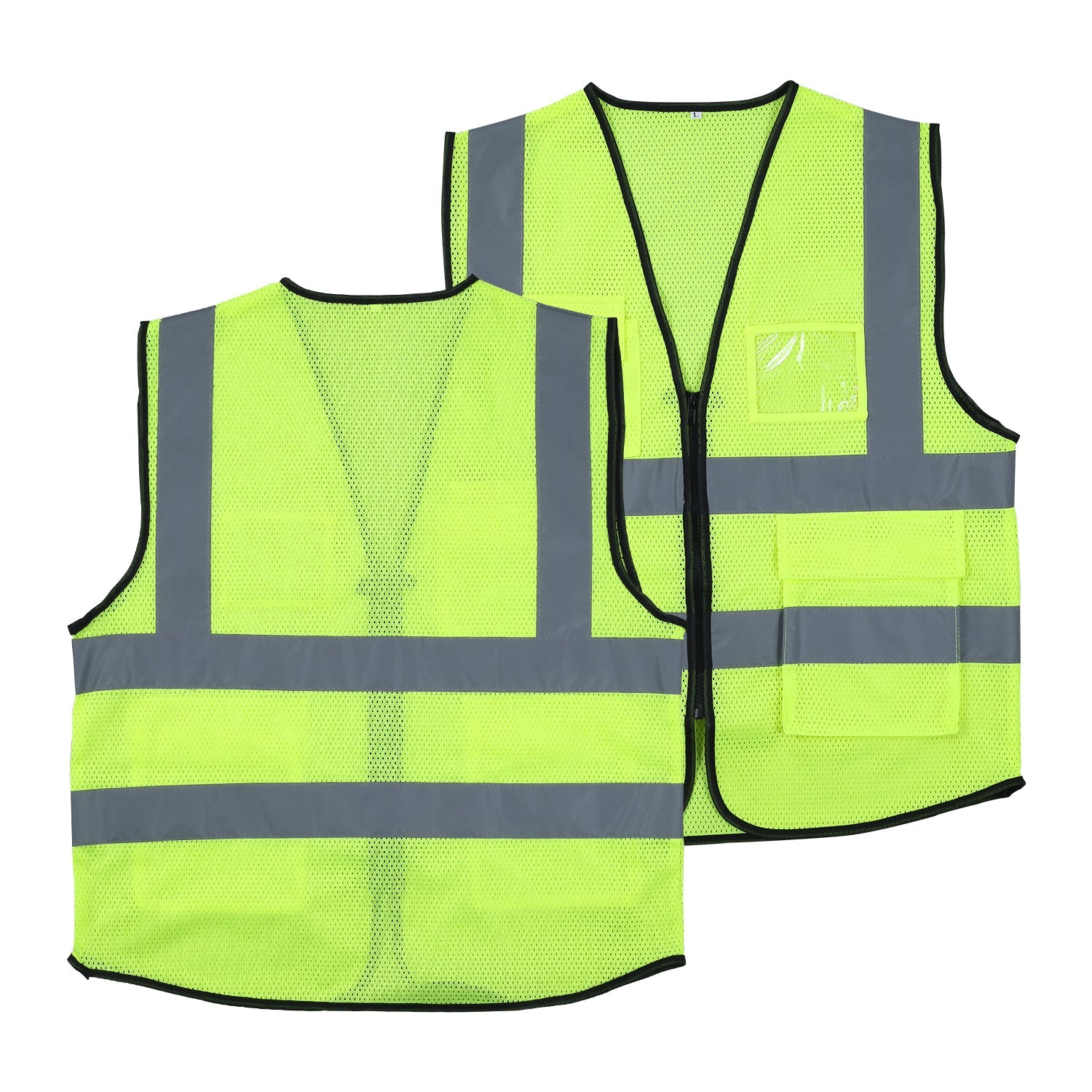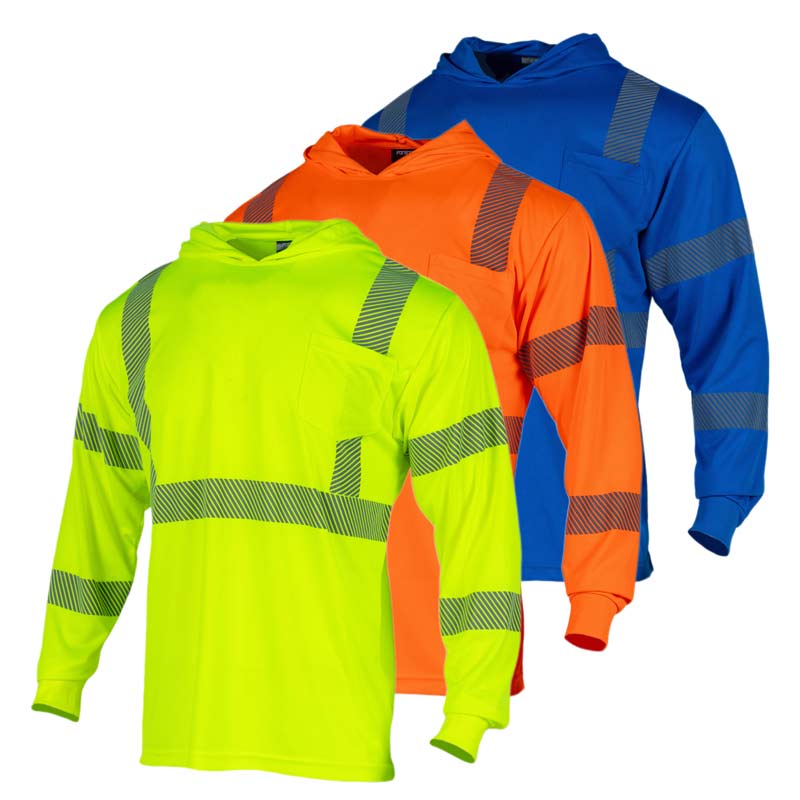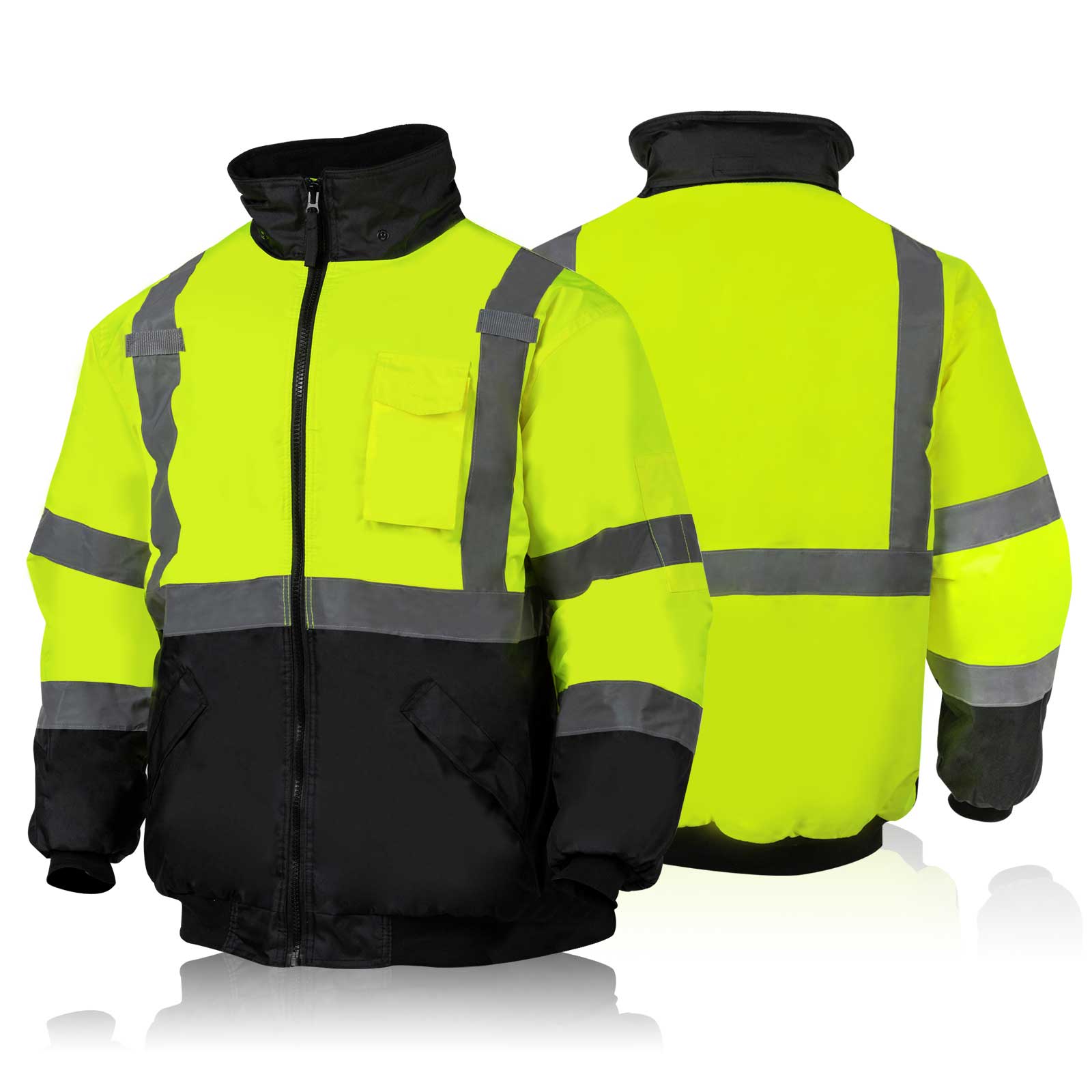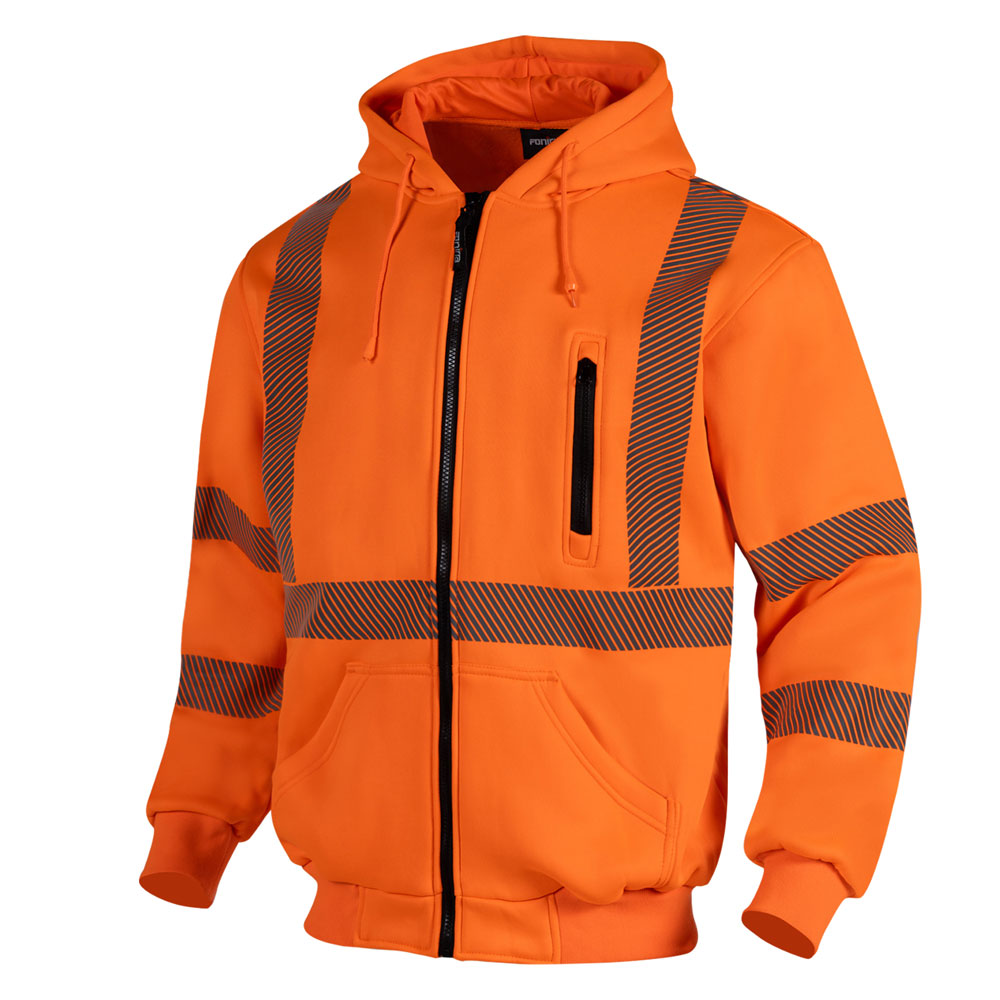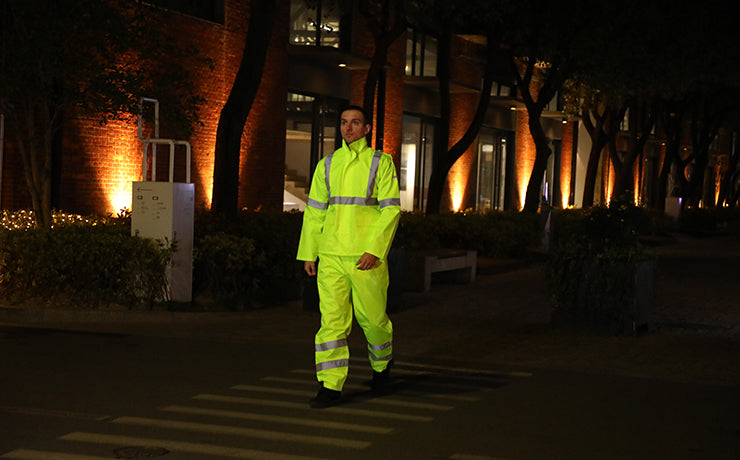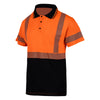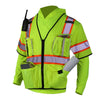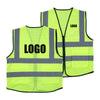Winter Work Clothes: The Ultimate Guide to Staying Warm and Safe on the Job
When winter's chill sets in, the right attire becomes more than a matter of comfort; it's a crucial element for safety and efficiency on the job site. Braving the elements in cold, snowy, or wet conditions without proper winter work clothes can not only hinder work performance but also pose significant health risks.
In this realm, Fonirra emerges as a trusted provider of quality winter workwear, offering solutions that meet the challenging demands of cold weather work. Their range of apparel, designed for both warmth and safety, sets a standard in the industry, ensuring that workers are well-equipped to face the bitter cold head-on.
Table of content:
- Understanding the Risks: The Importance of Staying Warm and Safe
- The Art of Layering: Maximizing Warmth and Flexibility
- Material Matters: Choosing the Right Fabrics
- Visibility and Safety in Winter Conditions
- Footwear and Accessories: The Final Touch in Winter Work Gear
- Choosing the Right Winter Workwear for Your Needs
Understanding the Risks: The Importance of Staying Warm and Safe
In cold environments, the risks to health and safety are manifold:
-
Hypothermia and Frostbite: Prolonged exposure to cold temperatures can lead to hypothermia, where the body loses heat faster than it can produce it. Frostbite, a condition where skin and tissues freeze, is also a severe risk.
-
Reduced Dexterity and Reaction Time: Cold weather can numb the senses, slowing down reaction times and reducing hand dexterity, which is critical for operating tools or machinery safely.
-
Increased Accident Risk: Slippery surfaces due to ice and snow can increase the risk of falls and accidents on the job site.
The right winter work clothes are essential in mitigating these risks. Thermal protection, offered by insulated clothing, helps maintain body temperature, reducing the risk of hypothermia and frostbite.
Additionally, proper footwear and accessories can improve grip and stability, countering the challenges posed by icy surfaces. By staying warm and agile, workers can maintain efficiency and safety, even in the coldest of conditions.
Essential Features of Winter Work Clothes

Key features of winter work clothes include:
-
Insulation: Essential for retaining body heat. Insulated jackets, pants, and layers trap warm air close to the body, providing a shield against the cold.
-
Waterproofing: Vital in snowy or rainy conditions. Waterproof (not water-resistant!) prevent moisture from penetrating clothing, keeping the wearer dry and warm. Avoid using water-resistant clothing since it doesn't keep you as warm as waterproof clothing does.
-
Breathability: Prevents overheating and perspiration buildup. Breathable fabrics allow moisture from sweat to escape, ensuring comfort and reducing the risk of cold-related injuries.
-
Visibility: Crucial in winter's shorter days and poorer light conditions. High-visibility elements on clothing ensure that workers are seen, preventing accidents in busy or low-visibility work environments. Choose the best ANSI Class for you based on your needs
Each of these features plays a significant role in ensuring the safety and comfort of workers in cold weather. Together, these features form the cornerstone of effective winter workwear, enabling workers to perform their jobs safely and efficiently, regardless of the winter weather conditions.
Related: How to Choose a Hi-Vis Jacket That Will Last Whole Winter?
The Art of Layering: Maximizing Warmth and Flexibility
Layering is a fundamental strategy for staying warm and adaptable in cold work environments. It’s not just about piling on more clothes; it's about creating a system of layers that work together to provide warmth, flexibility, and protection against the elements.
Effective layering allows workers to adjust their insulation based on their activity level and changes in the weather, ensuring they stay warm without overheating.

source: Workplace Safety North
Base Layer: Moisture Management
The base layer sits closest to your skin and has two main functions: moisture management and providing a basic level of insulation. This layer should be made of materials that wick sweat away from the skin, keeping you dry and warm.
Ideal materials include synthetic fibers like polyester or natural fibers like merino wool. For example, a long-sleeved wicking shirt and thermal underwear can serve as efficient base layers.
Mid Layer: Insulation
The mid-layer is responsible for retaining body heat to protect you from the cold. This layer should be insulating yet breathable, allowing moisture to escape to avoid dampness. Fleece jackets, wool sweaters, and down vests are popular choices.
In extremely cold conditions, additional mid-layers can be added for extra insulation. A key point is to ensure that these layers fit comfortably over each other without restricting movement.
Outer Layer: Protection from Wind and Precipitation
The outer layer, or shell layer, is your primary defense against wind, rain, and snow. This layer should be waterproof and windproof to protect against the elements while still being breathable to let out moisture.
A high-quality, durable jacket and work pants, preferably from trusted brands known for their outdoor or workwear, are critical. Features to look for include sealed seams, adjustable cuffs, and a hood.
Additional Considerations
-
Flexibility: Layering should allow for easy adjustment. Workers should be able to add or remove layers easily as their work environment changes or their body heats up and cools down during the day.
-
Accessories: Don’t forget about gloves, hats, and thermal socks. These items can be easily added or removed and play a crucial role in overall warmth, especially in protecting extremities which are more susceptible to cold.
-
Fit: Ensure that each layer fits well. Layers that are too tight can restrict movement and hinder circulation, while overly loose layers might not provide enough insulation.
By mastering the art of layering, workers can maintain an optimal body temperature in various conditions, enhancing both comfort and safety on the job. Layering not only helps to stay warm but also ensures that the wearer can stand up to the wind and cold while maintaining the flexibility to move and work effectively.
Other than wearing layers, other warmth management efforts such as taking regular breaks and quick warm-ups should also be done to prevent frostbites. Learn more about how to keep warm working outside during winter: https://www.fonirra.com/blogs/fonirra-blog/guide-to-staying-warm-working-outside-in-winter
Material Matters: Choosing the Right Fabrics
The choice of fabric in winter workwear is critical, impacting not just warmth, but also durability, comfort, and visibility in the work environment. Different materials offer varying levels of protection against the cold, moisture, and wind, making the selection process pivotal to finding the right balance for specific work conditions.
1. Wool
-
Pros: Wool is renowned for its natural insulating properties. Even when wet, wool retains heat, making it a dependable choice for cold weather. It’s also breathable, reducing the worry of overheating during strenuous tasks. Wool's durability is another advantage, ensuring that garments last longer even with regular use.
-
Cons: Wool can be heavier and bulkier, which might limit mobility in some cases. Some people find wool itchy, although finer grades like merino wool are generally more comfortable. Wool can also take longer to dry and might require more care in washing.
2. Synthetics (Polyester, Nylon, etc.)
-
Pros: Synthetic fabrics are lightweight and offer excellent moisture-wicking properties, keeping the skin dry. They dry quickly and are generally less expensive than natural fibers. Synthetics can be more resistant to wind and water, making them suitable for outer layers like coats and jackets.
-
Cons: They may not provide as much insulation as natural fibers like wool when wet. Durability can vary, with some synthetic fabrics being prone to pilling or damage from high heat.
3. Blends (Wool-Synthetic Mix)
-
Pros: Blends aim to offer the best of both worlds – the warmth and comfort of wool with the durability and moisture-wicking properties of synthetics. They can be more versatile, suitable for a range of weather conditions, and often strike a good balance between weight, warmth, and comfort.
-
Cons: The quality and performance of blends can vary widely, depending on the ratio and types of fibers used. They may not always offer the same level of warmth as pure wool or the same level of moisture management as synthetic fabrics.
Factors to Consider
-
Warmth: The primary concern in winter workwear is how well the material can retain heat. Thicker fabrics and those with good insulating properties like wool are preferable in extremely cold conditions.
-
Durability: Work environments can be demanding. Fabrics need to withstand regular wear and tear without compromising their protective qualities.
-
Comfort: Materials should allow for ease of movement and not be too restrictive, as comfort is key to maintaining focus on the task at hand.
-
Visibility: For safety, particularly in low-light conditions, workwear should have visible elements. Materials with a smoother surface can allow for better application of reflective strips and high-visibility elements.
-
Moisture Management: Being able to wick away sweat and resist external moisture (rain, snow) is crucial for staying dry and warm.
-
Ease of Care: Workwear that requires minimal special care and can withstand regular washing is more practical, especially when space for storage and maintenance is limited.
Visibility and Safety in Winter Conditions

In the stark landscape of winter, where daylight hours are short and weather conditions can rapidly change, the importance of high-visibility clothing and additional safety gear becomes paramount. This aspect of winter workwear is not just about adhering to safety standards but also about ensuring that workers are visible and protected in potentially hazardous environments.
High-Visibility Clothing
High-visibility clothing is designed to make workers easily noticeable in low-light conditions. The reduced sunlight of winter months, combined with fog, snow, or rain, can significantly decrease visibility on the job site. High-visibility items often feature bright, neon colors and reflective materials.
These elements stand out against the dull winter backdrop, ensuring that workers are seen by colleagues, especially important in areas with moving machinery or vehicle traffic.
-
Jackets and Coats: A thick, insulated coat in high-visibility colors with reflective strips ensures visibility and warmth. These coats are often designed with safety in mind, featuring elements like high-contrast colors and reflective sleeves for maximum visibility.
-
Additional Gear: High-visibility vests, which can be worn over thicker layers, hats with reflective strips, and even gloves with high-vis elements, all contribute to making a worker more visible.
Impact on Safety
Enhanced visibility is a critical factor in preventing accidents. It ensures that workers are seen in a range of conditions, from the early hours of winter mornings to the late hours of the evening, or even in poor weather conditions where visibility is further reduced.
-
Adaptability: High-visibility workwear is designed to be adaptable to different levels of light. The reflective materials used in these garments are typically designed to catch and reflect even the smallest amount of light, making them effective even in low-light conditions.
-
Versatility in Styles: High-visibility workwear comes in various styles to suit different work environments and personal preferences. This range ensures that all workers have access to the gear that best suits their role and the specific conditions they work in.
Related: How to Make Your High-Visibility Jacket Last Longer?
Footwear and Accessories: The Final Touch in Winter Work Gear
While coats, pants, and layers form the core of winter work attire, the role of footwear and accessories cannot be overstated. These elements not only complete the outfit but also provide crucial protection and comfort, enhancing the overall effectiveness of winter work gear.
1. Footwear: Stability and Warmth
Footwear in winter work environments needs to address two primary concerns: keeping feet warm and ensuring stability on potentially slippery surfaces. Boots designed for winter conditions typically feature insulation for warmth and waterproof exteriors to keep feet dry.
The soles are often made with materials that provide better traction on ice and snow, reducing the risk of slips and falls. Features like reinforced toes can offer additional protection against heavy objects.
2. Gloves: Dexterity and Protection
Gloves in winter work settings must balance warmth with dexterity. Thicker gloves provide more warmth but can reduce the ease of handling tools and equipment.
Look for gloves that offer a good grip and flexibility while providing sufficient insulation. Waterproof or water-resistant materials can also be beneficial, especially in wet conditions.
3. Hats and Thermal Socks: Shielding Extremities
A significant amount of body heat is lost through the head, making hats an essential item in winter workwear. Hats that cover the ears are particularly effective in protecting against cold winds. Similarly, thermal socks are crucial for keeping feet warm.
They should be made of materials that wick moisture away from the skin, as damp socks can lead to a rapid loss of warmth in the feet.

Choosing the Right Winter Workwear for Your Needs
Selecting the appropriate winter work clothes is crucial for ensuring safety, comfort, and efficiency, regardless of your job role or the environment in which you work. The key is to find a balance between warmth, safety, and functionality that suits your specific needs.
1. Assessing the Work Environment
-
Temperature and Weather Conditions: Consider the average temperatures and weather patterns you'll face. For extremely cold climates, prioritize heavily insulated gear. In milder but wet conditions, waterproofing might take precedence.
-
Nature of the Job: The physicality of the job is important. For more active roles, breathable and flexible clothing will prevent overheating. In stationary roles, heavier, more insulated gear might be necessary.
-
Risk Factors: Evaluate the risks involved in your job, such as exposure to hazardous materials, the need for high visibility, or protection against sharp objects. Specialized workwear might be required to address these risks.
2. Prioritizing Functionality and Comfort
-
Ease of Movement: Ensure that the clothing allows for full range of motion. Restrictive clothing can hinder job performance and even pose safety risks.
-
Layering Capability: Choose garments that can be easily layered. This flexibility allows you to adjust your insulation based on changing temperatures and activity levels.
-
Practical Features: Look for practical elements like deep pockets, durable zippers, and adjustable cuffs. These small details can significantly improve convenience and functionality on the job.
3. Balancing Warmth and Safety
-
High-Visibility Elements: For jobs in low-light conditions or near moving vehicles, select clothing with high-visibility elements to ensure you are seen and safe.
-
Protective Accessories: Don't overlook the importance of accessories like gloves, hats, and boots, which should complement the primary workwear in both warmth and safety.
Conclusion
Navigating winter's harsh conditions with the right workwear is essential for safety and comfort. We've explored the importance of layering, selecting suitable materials, and ensuring high visibility for optimal protection. As you gear up for the cold season, remember that the right outfit can significantly enhance your work experience.
We at Fonirra are dedicated to providing you with top-notch winter workwear solutions. Our carefully curated selection is designed to meet the unique challenges of winter, offering warmth, safety, and style.
Embrace the colder months with confidence and ease, outfitted in Fonirra's dependable and high-quality gear. Let us be your partner in turning winter workdays into opportunities for productivity and safety.
-
Posted in
class 3 winter jacket, high-vis clothing, winter

